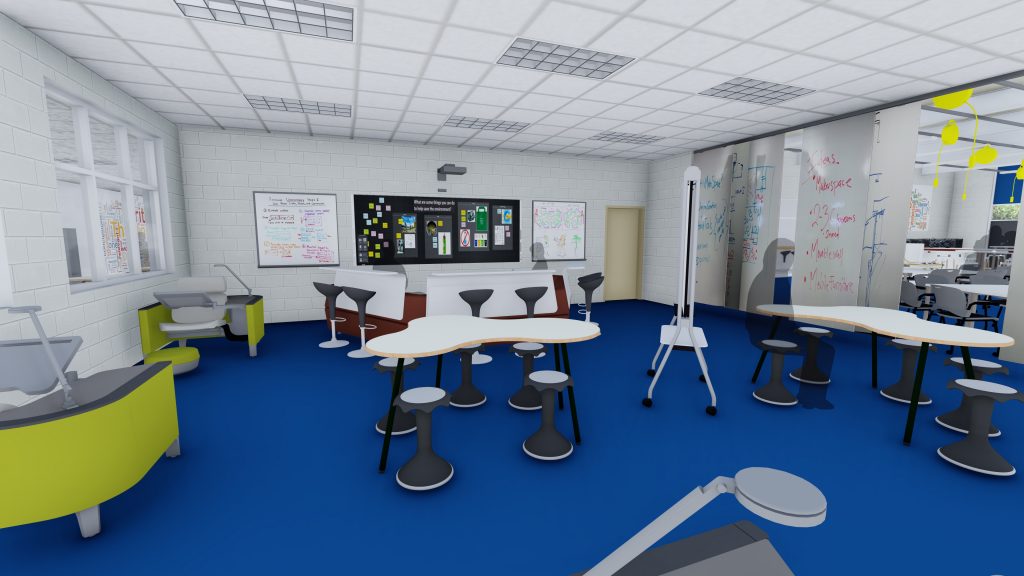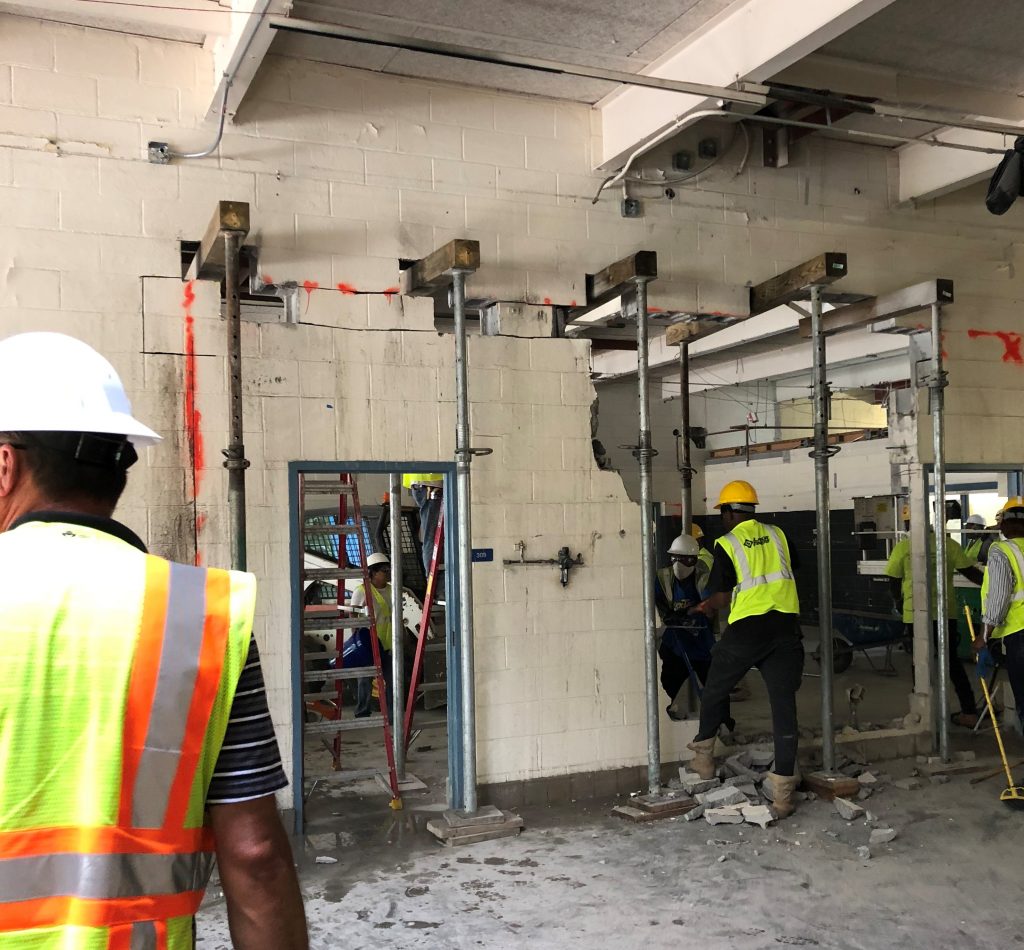When Kempsville High School Entrepreneurship and Business Academy (EBA) students return in September, they will see reimagined, modern classroom spaces with flexible furniture on cast rollers that they will be able to move around to suit their creative, business-savvy needs.
Outside, hallways are also being transformed to have collaborative works spaces with white boards and even green screens where students can produce commercials or advertisements for the product ideas that they are pitching or developing in their entrepreneurial classes.
“We’ve been working with what we’ve got out of a couple of different spaces,” said Meghan Timlin, coordinator of Kempsville’s academy, which recently won first place at the World Series of Entrepreneurship competition. “This will really give us a whole hallmark of an area that is denoted as ours and it puts a mark on Kempsville High School that the academy is here.”
The Kempsville EBA project is one of several infrastructure projects currently underway this summer.
“Infrastructure projects are different than routine maintenance,” said Executive Director of Facilities Services Tony Arnold. “While some of them can be multi-school or larger projects such as painting a few high schools in one summer or re-roofing a building, oftentimes they are complex projects such as constructing parking lots, re-designing classroom spaces or replacing field lighting. Typically these projects require the services of professional architects and engineers.”
Design efforts for those projects begin with architects and engineers who are familiar with K-12 work.
Oftentimes, initial project specifications provided by the architects and engineers are more than initial plans from the Facilities Office. Typically, they are the result of multiple design charrettes involving school and sometimes community stakeholders.
Project plans are reviewed at every stage by the school division’s facilities team, which is comprised of professionals who themselves have strong architectural, engineering and project planning backgrounds. These plans are also reviewed by the division’s maintenance staff.
On projects, such as total school replacement or modernizations, the division will often look to value engineering teams, architects and engineers from other firms to provide recommendations on cost-saving measures.
“When the design is completed on these larger projects, we also have these plans checked by an additional third-party firm to correct errors, omissions or conflicts and to ensure the bid document is a quality package that is ready for bidding through the school division’s procurement process,” Arnold added.
“While we have an obligation as a public agency to accept the lowest responsive and responsible bid, we also have the bid evaluated by the design team and our office to determine that it is, in fact, a bid that meets our specifications and is in accordance with School Board policy.”
The planning process for large scale infrastructure work typically occurs 12–24 months in advance of the work actually taking place.
A good example is the work at Kempsville’s academy.
Some additional infrastructure projects occurring this summer include baseball field lighting at Green Run High School; running track renovations at Landstown High School; roof replacement at Salem Middle School; carpet replacement at both Landstown and Ocean Lakes high schools; parking lot construction at the Plaza Annex; boiler replacements; and a multitude of heating, ventilation and air conditioning replacement projects at several elementary and middle schools. All of this work is done in collaboration with the school division’s maintenance team. That team is also currently working on numerous maintenance projects this summer.
This work is all in addition to the school modernization and replacement capital projects underway at Dey Elementary and about to start at Thoroughgood Elementary and Princess Anne Middle schools.
“When there’s 11 million square feet of space in the school division and you’re only replacing one school every two years, then there’s a good chance that 10 million-plus square feet of that space needs to be taken care of every day,” Arnold stated. “That’s the quiet work that goes on each day and is a result of the work done by our maintenance team and through infrastructure projects.”


